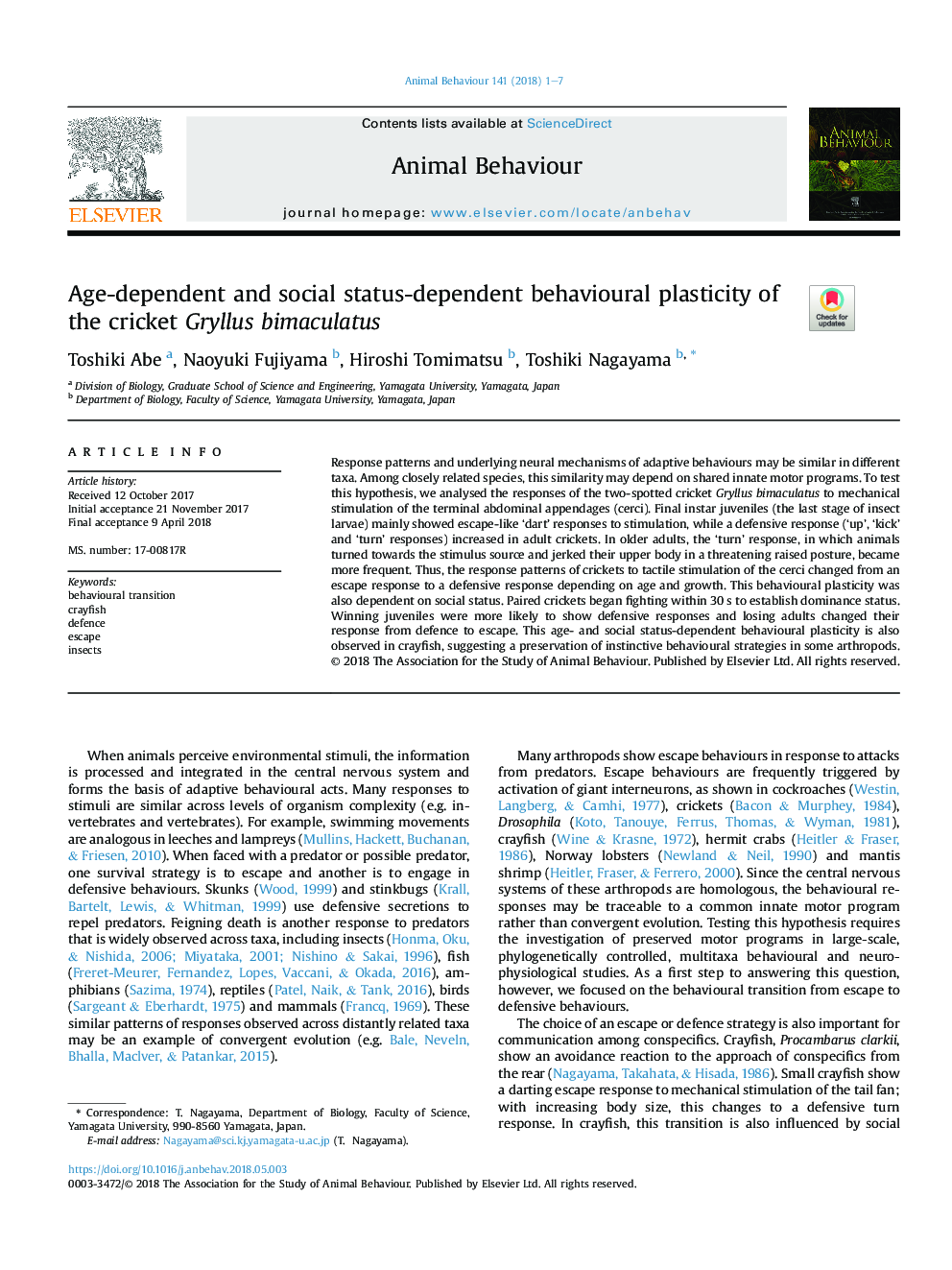| Article ID | Journal | Published Year | Pages | File Type |
|---|---|---|---|---|
| 8488464 | Animal Behaviour | 2018 | 7 Pages |
Abstract
Response patterns and underlying neural mechanisms of adaptive behaviours may be similar in different taxa. Among closely related species, this similarity may depend on shared innate motor programs. To test this hypothesis, we analysed the responses of the two-spotted cricket Gryllus bimaculatus to mechanical stimulation of the terminal abdominal appendages (cerci). Final instar juveniles (the last stage of insect larvae) mainly showed escape-like 'dart' responses to stimulation, while a defensive response ('up', 'kick' and 'turn' responses) increased in adult crickets. In older adults, the 'turn' response, in which animals turned towards the stimulus source and jerked their upper body in a threatening raised posture, became more frequent. Thus, the response patterns of crickets to tactile stimulation of the cerci changed from an escape response to a defensive response depending on age and growth. This behavioural plasticity was also dependent on social status. Paired crickets began fighting within 30Â s to establish dominance status. Winning juveniles were more likely to show defensive responses and losing adults changed their response from defence to escape. This age- and social status-dependent behavioural plasticity is also observed in crayfish, suggesting a preservation of instinctive behavioural strategies in some arthropods.
Related Topics
Life Sciences
Agricultural and Biological Sciences
Animal Science and Zoology
Authors
Toshiki Abe, Naoyuki Fujiyama, Hiroshi Tomimatsu, Toshiki Nagayama,
